Simon Peg & Nick Frost Paul
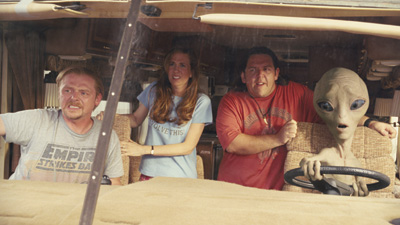
Paul
Cast: Simon Peg, Nick Frost, Jason Bateman, Kristen Wiig, Bill Hader, Blythe Danner, Joe Lo Truglio, John Carroll Lunch, David Koechner, Sigourney Weaver, Seth RoganDirector: Greg Mottola
Genre: Comedy, Sci-Fi
Synopsis: Simon Pegg and Nick Frost (Hot Fuzz, Shaun of the Dead) reunite for the comedy adventure Paul. As two sci-fi geeks whose pilgrimage takes them to America's UFO heartland, they encounter a wisecracking alien and help him on a daredevil quest that will alter our universe forever.
Release Date: April 14th, 2011
About the Production
Everyone's an Alien: Paul Is DiscoveredThe notoriously rainy English climate has spoiled picnics, caused plenty of traffic jams on British highways and wreaked havoc on the schedule of more than one film production. One of the unexpected benefits of the inclement weather, however, is that it indirectly gave rise to the comedy-adventure Paul.
During the rain-soaked shooting of Simon Pegg's first film, the rom-zom-com Shaun of the Dead, producer Nira Park asked him what he was planning for his next project. Fed up with rain delays, Simon Pegg swore he wanted his next movie to be shot in a warm, dry climate. He laughed: "Let's make a film somewhere it never rains, like a desert."
"That day, over lunch, Simon Pegg handed me this drawing of an alien with a tagline that read, 'In America, everyone's an alien,'" remembers Nira Park. "He said, 'This is our next movie-a road trip with an alien.' We talked about it a bit and how the film would be shot in the American Southwest. After that, I pinned the piece of paper on my drawing board and kept thinking about it. I thought, 'What a brilliant idea.'"
In the years that passed, Simon Pegg and his frequent director and collaborator, Edgar Wright, moved onto other projects for the production company they share with Park, Big Talk Pictures. The most prominent of these was the action-comedy Hot Fuzz, the company's second hit.
Nira Park recalls: "At the end of Hot Fuzz, I reminded Simon Pegg again about the idea. I said, 'Why don't you just write up the first scene...just to see?' Simon Pegg returned 10 minutes later with a scene, and it was just fantastic." Nira Park sent the copy to Eric Fellner at Working Title Films, the successful British production company that had funded Big Talk's previous efforts.
Eric Fellner remembers that day: "Nira Park sent over the treatment, and I was eager to find out what Nick Frost and Simon Pegg were cooking up. By its very nature, a road trip is about exploration and discovering places and people you've never encountered. When I read how this concept had been married with an alien comedy, I thought it was brilliant."
After she heard back from Eric Fellner, Nira Park phoned Simon Pegg. She recounts, "I told him, 'He wants to do it!' and Simon Pegg said, 'Who wants to do what?' and I said, 'That thing!' By the time we started filming, we realised it had been six years since he gave me that piece of paper. I had it scanned and gave it to the director, Greg Mottola, on the first day of filming."
Paul marks the first screenplay Simon Pegg and his frequent co-star and close friend Nick Frost have written as partners. "Nick Frost and I have worked together for 10 years and we've been friends for much longer," shares Simon Pegg. "The collaboration has been an interesting experience, because we've slightly changed the dynamic of our characters in this one. In the other movies, which I wrote with Edgar Wright, I played the main character and Nick Frost is the sidekick. But this film is very much a doubleheader. If anything, Nick Frost's character, Clive, is slightly more dominant and confident, whereas my character, Graeme, is a bit of a wallflower at first."
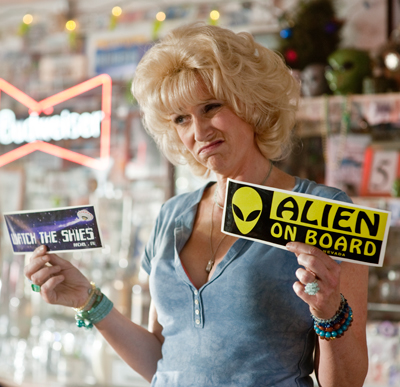 Before putting pen to paper, Simon Pegg and Nick Frost set out on an actual road trip in an RV across the American West, starting in Los Angeles, California, and weaving their way through several states until they ended up in Denver, Colorado. The excursion proved to be invaluable in the creation of the film's story. Ironically, they encountered terrible weather, including heavy snow and temperatures so low that their RV's battery froze. Nonetheless, Simon Pegg found the trip extraordinary and inspirational. "We learned so much about the landscape. It was extraordinarily beautiful, hospitable and inhospitable at the same time, remarkable country."
Before putting pen to paper, Simon Pegg and Nick Frost set out on an actual road trip in an RV across the American West, starting in Los Angeles, California, and weaving their way through several states until they ended up in Denver, Colorado. The excursion proved to be invaluable in the creation of the film's story. Ironically, they encountered terrible weather, including heavy snow and temperatures so low that their RV's battery froze. Nonetheless, Simon Pegg found the trip extraordinary and inspirational. "We learned so much about the landscape. It was extraordinarily beautiful, hospitable and inhospitable at the same time, remarkable country." Another aspect they had not anticipated, according to Nick Frost, was the scope of their undertaking. "There's something about the size of America for which we weren't prepared," he confesses. "You look at it on a map and think 'All right, we can probably do that in three or four days.' Then, after a day's driving for 10 or 11 hours, you've only gone 300 miles and you've got to travel 2,000 miles. We did nothing but drive from eight in the morning until nine or ten at night. Then there was the weather. When we got to Nevada, it started snowing, and it continued for the rest of the trip. In certain parts of Wyoming and Colorado, it got so cold the beer would freeze inside the fridge and the shampoo in the bottles." Nick Frost laughs: "I think we killed the RV."
They wove several of their experiences from the trip into the script. "We actually went to a place called the Little A'Le'Inn, and the incident in the film with the meatheads happened to us," recalls Simon Pegg. "There were these two guys who came in who were perhaps not quite as threatening as the characters in the movie, but they certainly made the atmosphere turn cold. The bird hitting the windshield also happened. Every day there was a new experience. We had a real adventure. It was vital and brilliant fun, and we never could have written the movie without it."
Since it was a bit difficult to locate an actual extraterrestrial to take the trip with them, the duo came up with a suitable substitute. One of Simon Pegg's friends sculpted a bust of an alien and called him Paul. "All the photos they sent were framed in such a way that Paul looked like he was with them," says producer Nira Park. "That inspired them, brought it to life. They suddenly thought, 'You know, this could really work.'"
Once the excursion was over, Simon Pegg and Nick Frost watched more than 50 movies about aliens and about road trips. "Then we just sat opposite one another and banged it out, line by line," recalls Nick Frost. "For a time Simon Pegg went off to do How to Lose Friends and Alienate People, and since we needed a draft of the script, I went away for a couple of weeks and wrote a big 180-page script. When Simon Pegg returned, we took that behemoth and completely deconstructed it. We kept what was good, and what was bad was elbowed. Simon Pegg had a big monitor so I could see what he was typing. We discussed every single line, sometimes for hours."
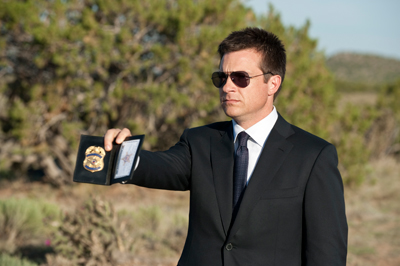 What emerged was a comedy-adventure that is actually about more than one visitor who's far from home. "In one respect, everyone in this film is slightly alien," says Simon Pegg. "That was a key factor in the writing: this idea of people not being where they belong and learning to live where they don't belong."
What emerged was a comedy-adventure that is actually about more than one visitor who's far from home. "In one respect, everyone in this film is slightly alien," says Simon Pegg. "That was a key factor in the writing: this idea of people not being where they belong and learning to live where they don't belong." The search for a director began and ended when Greg Mottola was proposed. At the time, Mottola's only theatrical release was The Daytrippers, an independent film that Nira Park and Simon Pegg both hugely admired. But he also had a new movie in the wings called Superbad, and when the comedy was screened for them, they knew they had their man. "Greg Mottola's films have a certain feel, a certain lightness of touch," commends Simon Pegg. "He is able to bring indie feel to a more mainstream film."
Greg Mottola first met Simon Pegg at a hotel restaurant in New York City the day that Superbad opened. Simon Pegg walked him through their concept for Paul and Greg Mottola responded to Simon Pegg and Nick Frost's story breakdown of ordinary, interesting people who find themselves in an extraordinary situation. He offers: "Nick Frost and Simon Pegg have created smart, interesting characters and I find them really appealing as performers. Together, they have that special chemistry that is endlessly enjoyable to watch. I think it's because they're close friends and that they make each other laugh effortlessly."
Six months later, Greg Mottola received the script for Paul. He recalls: "Just as Shaun of the Dead is about zombies and Hot Fuzz is about action movies, this was an homage to late '70s science-fiction films and the genre of science fiction in general. This was something that had tremendous nostalgia for me. They were writing about it from the inside as two fans of the genre."
He decided to join the production because of his gut instinct about the material. Greg Mottola says: "My operating principle is that when I want to make a film, when I read a script to try and decide whether to throw my hat in the ring, I have to feel that it's something that I am uniquely qualified to do...that I have a way of doing it that would be different than the other guy."
Big Talk and Working Title's subsequent meetings with Greg Mottola only confirmed their belief that he was the right choice to craft both a comedy, as well as an actioner in which the sequences were very choreographed. "It was clear that he got the kind of film we wanted to make," says Nira Park. "Another thing that sold us on Greg Mottola is that he's incredibly visual. He wanted to make Paul in a very Steven Spielberg-like manner, and the way he talked about it, we just knew that he got it. Once we'd met Greg Mottola, we never met with anyone else. He was very interested in character, and that was very important to us."
Comedy Across the Sea: Casting the Film
As Simon Pegg sees it, the cast assembled for Paul is "a coming together of the comedy communities in the U.S. and the U.K." Simon Pegg and Nick Frost represent the British contingent, and the other principal members of the cast are notable American comic names, many of whom have previously worked with Greg Mottola.
The director has a long history in the world of television, and that would prove quite helpful as he phoned a number of previous collaborators when casting for Paul began. Shares Greg Mottola: "I had made friends with all these super talented, next-generation comedy types and was in the position to be able to call them, send them the script and say, 'Would you do this?' I liked the idea of mixing Simon Pegg and Nick Frost with a wave of American comedy folks, and everyone got into the spirit of what the movie is."
Along with the human protagonists, Graeme and Clive, the crucial third member of the cast is of course Paul himself. Though his physical presence would ultimately be the work of the CGI wizards at Double Negative, his voice needed to be very human. Says Eric Fellner: "We knew that the film would never work if Paul felt like a wholly CGI character. That would immediately take people out of the movie. He had to feel like every other actor in the film. In every test we did, we learned that the performance of the actor had to drive the CGI....never vice versa."
The voice that was decided upon was Seth Rogen, one of America's top comedy stars and a performer with whom Greg Mottola had previously worked on Superbad (which Seth Rogen co-starred and co-wrote). It proved to be an inspired choice, claims Nick Frost, as the team was able to take the character in a fresh direction. "At first, Paul was much older and grumpier, much more of a curmudgeon than he is now," he states.
The team saw Paul as a catalyst for change in everyone around him, and Simon Pegg and Nick Frost liked the updates to their title character that Seth Rogen suggested. "Now he's a free spirit and less of a jerk than he was when Nick and I first thought of him," says Simon Pegg. "When Seth Rogan's name came up, it seemed cool, because Seth Rogan's got a lot of youth and vitality. He also has this gravelly voice, and obviously he's incredibly funny. As soon as we started thinking about Seth Rogan, we began to adapt Paul slightly. By the time Seth Rogan got to him, Paul had evolved into this Ferris Bueller-style sprite who changes everyone's lives."
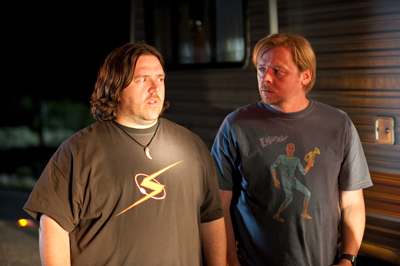 In a fortuitous meeting, Seth Rogen had actually run into Simon Pegg and Nick Frost years ago at San Diego's Comic-Con and kept in touch over the years. He found the men to be kindred spirits and enjoyed their writing and unique characterisations. Of course, he'd worked with Greg Mottola on Superbad, so it was an easy decision for him to join the director's new production.
In a fortuitous meeting, Seth Rogen had actually run into Simon Pegg and Nick Frost years ago at San Diego's Comic-Con and kept in touch over the years. He found the men to be kindred spirits and enjoyed their writing and unique characterisations. Of course, he'd worked with Greg Mottola on Superbad, so it was an easy decision for him to join the director's new production. His long friendship with the director ensured that he'd be involved in bringing Paul to the screen. Seth Rogen offers: "I've known Greg Mottola for almost 10 years. He actually directed the first thing I wrote that got made, which was an episode of Undeclared. We got along really well, and he ended up directing a couple more episodes that I wrote of the show that season. We became good friends and when we were finally able to get Superbad made, he was the first guy we sent it to."
Considering that Paul crash-landed on Earth decades ago, Seth Rogen wanted to infuse the character with a world-weary, yet relaxed sensibility of a guy who would contrast well with his uptight fellow travelers. He says: "I thought it would be funny if these nerdy, uptight guys met up with a Neil Young-type guy who was an old hippie who'd seen it all and has a chilled-out attitude...but is also very passionate about some things." He adds, "Because Neil Young rocks hard and I wanted Paul to have that also."
Seth Rogen liked the fact that Paul changes the people around him, and he doesn't actually change that much himself during the course of the film. He explains their thought process as they developed Paul's character: "Ferris Bueller is rad to begin with and rad to end with, but everyone else is a little more rad for hanging out with him for the day. That's what we talked about with Paul. Graeme and Clive are incredibly nerdy and in their shell and very afraid to do anything-to go after a girl or pursue their career aspirations. Paul coaches them through that. Plus, these guys' dreams come true and they meet an alien and he's actually a fun guy to be around. He does things like drink beer, smoke weed and make jokes."
Greg Mottola shares why Seth Rogen was the ideal actor for the part: "Paul can turn invisible and heal things, but he mixes up pistachios and mussels as to which one you'll get food poisoning from if you eat an unopened one. He's fallible; he's us. That's something that Simon Pegg and Nick Frost intuitively wrote, but when Seth Rogan performed it, he instantly got that about the guy. Paul had to be very similar to a human being, and that's simultaneously disappointing and reassuring about him."
Casting Seth Rogen also influenced how the character would ultimately be animated. "When we started working on him, Paul's movements were quite big and he was doing loud and funny things," shares Nira Park. "But Greg Mottola just kept bringing it back until he felt very real. That's when we realised what we had to do. We knew we needed to record Seth Rogan, rehearse with him, film those rehearsals and then give them to the animators. Seth Rogan's own movements had to be the basis for the animation."
Hot on the tail of both the British visitors and otherworldly kind is Special Agent Lorenzo Zoil (read that back again), who has the answers to many questions about Paul's decades on Earth. Jason Bateman, who dates his relationship with Greg Mottola back to the acclaimed television series Arrested Development, stepped into the role.
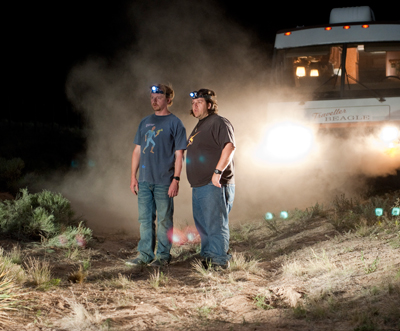 Simon Pegg was enthused when Jason Bateman agreed to play Zoil. "Jason Bateman is an extraordinary actor," he compliments. "I could watch him act forever. He has something that is hard to put your finger on, because he's so effortlessly good. There's a naturalism and a rhythm to his delivery that is unique, and he's one of the few actors in the movie industry who can do comic and straight at the same time."
Simon Pegg was enthused when Jason Bateman agreed to play Zoil. "Jason Bateman is an extraordinary actor," he compliments. "I could watch him act forever. He has something that is hard to put your finger on, because he's so effortlessly good. There's a naturalism and a rhythm to his delivery that is unique, and he's one of the few actors in the movie industry who can do comic and straight at the same time." Jason Bateman's ability to understand both the humorous and serious sides of a scene was welcome on set, Simon Pegg recalls. "When we were casting the film, I was determined that Zoil be played by someone who would be threatening and you could take seriously. The other creative forces were saying, 'No, he has to be funny; he has to be a comedy person.' And I said, 'No, the threat's not going to be real with somebody goofing around.' When Jason Bateman's name came up, I liked him for it, because he can bring the fun at the same time he is being a very credible threat. It's also nice to see him playing someone who appears to be a bad guy."
For his part, Jason Bateman views Zoil as a "humorless, badass boss who's intolerant of fools. I felt it was important not to deviate a lot from that, which can be somewhat limiting for an actor, but in another sense is very good because it forces you to be disciplined and not chew up the scenery. I was very pleased to be part of the ensemble of a bunch of actors I admire and filmmakers I enjoy."
Jason Bateman's fellow interplanetary bounty hunters are two odd underlings named Haggard and O'Reilly, played by, respectively, Bill Hader and Joe Lo Truglio. As Bill Hader observes of the crime-busting duo, "They're not the brightest guys, but they're eager to please. My character, because he's so ambitious, slowly starts to usurp Zoil's authority because he's caught on that they might be looking for an alien. It was fun to start off as a guy who straightens his tie a lot and says things like 'We're in the big leagues now!' Then, as the movie goes along, he loses his mind and goes completely evil."
Bill Hader appreciated that the journey the characters take is similar to the one Simon Pegg and Nick Frost had pre-scripting the film. "What they've created is a weird love letter to America and American movies," he says. "Paul is the kind of movie they saw in their youth and what inspired them about American culture. It's funny to see a British person's point of view of our country. There's a lot of truth to it. It's subversive and very cool and smart. There's always another layer you don't expect."
Haggard's partner in crime busting is O'Reilly, a true naïf who is trying to learn how to be a federal agent. "O'Reilly likes the idea of being an agent but he isn't a very good one," notes Lo Truglio. "He learned about it through movies and comic books. He's wide-eyed and adorable like a puppy dog who pees on the carpet and can't understand why everyone's mad at him. He's just having a good time and always trying to impress Agent Zoil, this cool-looking, badass agent."
Kristen Wiig, like co-star Bill Hader, is both a veteran of Saturday Night Live and appeared in Greg Mottola's recent comedy Adventureland. She was cast as Ruth, a sheltered young woman who lives an isolated existence at an RV park with her Bible-thumping, gun-toting dad, Moses. "Ruth changed a great deal in the last couple of months before we started production," states Nira Park. "What we didn't have in our earlier drafts was her becoming a freed version of herself, which emerged from our conversations with Kristen Wiig about the character."
Kristen Wiig offers that filming Paul was a unique experience... and not just because of the visual effects. "Greg Mottola and Simon Pegg and Nick Frost made so many smart choices every step of the way. I loved their vision."
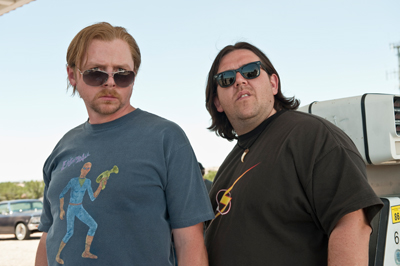 Ruth is the character who changes the most throughout the course of the story, which was both a pleasure and challenge for Kristen Wiig. She contends, "It was interesting to watch Ruth have a bit of a breakdown when she sees Paul and realises the world is more than she thought it was. Now she has to question it. It's something everyone can relate to and it made her an interesting character to play, because I wanted to keep her real and funny while, at the same time, see her have this spiritual breakdown. It's like finding out there's no Santa Claus. You think one way your whole life, and then someone tells you it's not real and you get angry and want to argue about it. Ruth doesn't give up her beliefs easily. She fights for them."
Ruth is the character who changes the most throughout the course of the story, which was both a pleasure and challenge for Kristen Wiig. She contends, "It was interesting to watch Ruth have a bit of a breakdown when she sees Paul and realises the world is more than she thought it was. Now she has to question it. It's something everyone can relate to and it made her an interesting character to play, because I wanted to keep her real and funny while, at the same time, see her have this spiritual breakdown. It's like finding out there's no Santa Claus. You think one way your whole life, and then someone tells you it's not real and you get angry and want to argue about it. Ruth doesn't give up her beliefs easily. She fights for them." "Kristen Wiig blew me away on this film," compliments her on-screen love interest, Simon Pegg. "She's one of the most remarkable actresses I've ever met. Certainly comically she's extraordinary and beguiling, and I followed her around like a puppy the whole time because she made me laugh so much. But she also brought a lovely gentleness to Ruth, and there were bits she made funny that we never even imagined were funny. She just managed to instill every line with something special."
Brought onto the production to play Ruth's father, Moses Buggs, was veteran character actor John Carroll Lynch, known for his standout work in films including Fargo, Zodiac and Shutter Island. John Carroll Lynch was tasked with a role that could, in other hands, have been a caricature. "Buggs is this sad character," shares Simon Pegg. "He's tyrannical, very religious, but the kind of guy who's clearly been scared into an extreme faith. He takes after Graeme and Clive to get his daughter back. All us comedy people sometimes feel like we're playacting, but when you have someone like John Carroll Lynch around, even though he does comedy so well, it's like, 'Wow, a real actor!'"
John Carroll Lynch says he was committed to performing in Paul from the moment he finished reading the screenplay. "My favorite part about the script was that it was a satire of science-fiction movies but, at the same time, honors everything in science-fiction movies while it makes you laugh. That's a terrific accomplishment."
Comic actors Jane Lynch and Jeffrey Tambor were brought onto the production for key cameo roles. As Pat Stevens, saucy waitress at the Little A'Le'Inn, Jane Lynch serves up her share of homespun wisdom to Graeme and Nick Frost as they go in search of alien revelations. Tambor plays legendary sci-fi author Adam Shadowchild, the acerbic Comic-Con panelist (and fellow Nebulon Award winner) who serves as inspiration for Graeme and Clive's latest work, "Jelva, Alien Queen of the Varvak."
Rounding out the principal team were two other "real actors," as Simon Pegg labels them: legendary actresses Blythe Danner and Sigourney Weaver. Blythe Danner plays Tara, a character Simon Pegg describes as "a slightly batty old woman who lives in this house on her own and was very much a part of this story right from the very beginning. Blythe Danner is someone we thought of quite early on, because she's very beautiful but she can also play slightly distracted very well."
Seth Rogen expands upon the role Tara plays in the world of Paul: "When Paul crash-lands on earth, he lands on this girl's dog and she sees him. Her whole life, she is convinced that he's not real. He wants to tell her that he is real and that she's not insane. Paul ultimately took his name from her dog because it seemed like an awesome name-one syllable."
For Blythe Danner, director Greg Mottola created an atmosphere that was supportive of the cast exploring their wackier sides. She commends: "Greg Mottola gives his actors freedom to explore their characters but has a very good sense of what's too much or not enough. He's such a pleasure to work with-calm, relaxed, a wonderful director."
From the Alien series to Avatar, Sigourney Weaver has been a fan favorite of the genre for years. It was a coup to the production when she agreed to play The Big Guy, Agent Zoil's tyrannical and intimidating (and cryptically named) boss. In a backstory reminiscent of Alien's Lieutenant Ripley, The Big Guy was a character originally written as a man. One night, over dinner, as the filmmakers were discussing possible actors to embody The Big Guy, Nick Frost suddenly said: "What if The Big Guy was a woman?" Recalls Nira Park of the revelation: "We thought, 'That would be brilliant, but if she is a woman, there is only one person who could play her: Sigourney Weaver.'"
Fortunately, Sigourney Weaver agreed and, according to Simon Pegg, in addition to nailing the role, her presence also provided thematic resonance. "She was in one of the most famous science-fiction franchises of all time, so her connection to the notion of aliens was a lovely bonus," he enthuses. "I was so happy when she read the script and liked it and came on. She was totally into the fun of it, and she looked just amazing."
Fresh off of the juggernaut Avatar, Sigourney Weaver didn't mind jumping into another alien adventure, especially with director Greg Mottola, whose work she admired, at the helm. She describes what else interested her in the film: "I was sent the script, which I fell in love with. It was delicious, sweet and exciting comedy. It picked up a little bit where Galaxy Quest left off in terms of Comic-Con and glory to the geeks. I found it so touching and loved the love story. I play the heavy, but you can't have everything, you know?"
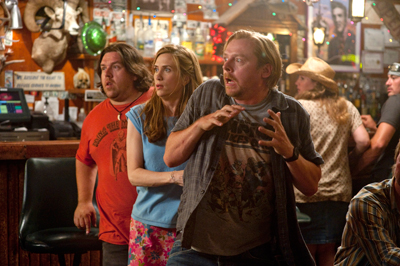 While we grow to learn that Zoil has been sent by The Big Guy to apprehend Paul before he can hop on his mother ship, her character remains mysterious until the end. Explains Sigourney Weaver: "She clearly has very sour feelings about Paul. She feels that he's been freeloading on the American public for a long time and wants to be rid of him. Why shouldn't she be hanging out with Simon Spielberg? Why should this little guy? There's no love lost between them. She suddenly realises that she has an opportunity to squash him and wants to take advantage of it through her very dependable underling, Zoil."
While we grow to learn that Zoil has been sent by The Big Guy to apprehend Paul before he can hop on his mother ship, her character remains mysterious until the end. Explains Sigourney Weaver: "She clearly has very sour feelings about Paul. She feels that he's been freeloading on the American public for a long time and wants to be rid of him. Why shouldn't she be hanging out with Simon Spielberg? Why should this little guy? There's no love lost between them. She suddenly realises that she has an opportunity to squash him and wants to take advantage of it through her very dependable underling, Zoil." The Many Faces of Paul: Building an Alien
When Greg Mottola was first approached about directing Paul, he admits he was nervous to helm a project in which the main character was wholly CGI. "Now that I'm done with the animation," he admits candidly, "I didn't know how scared I should be. It's hard to pull off full-on, complete animation. You're deciding every time your character blinks, every time it smiles, what kind of smile it is and whether its Adam's apple is going to move or not. It's a long way from the stop-motion animation I did as an eight-year-old with my Super 8 camera."
Though Paul is purposefully intended to resemble the classic alien ingrained in our collective psyche, it was still crucial to make him as human as possible. "We had to create an alien that for all intents and purposes is a human being in his behavior and just happens to look like an alien with certain abilities," Greg Mottola states. "But for 90 percent of the screen time, he's just a guy in a car hanging out. We wanted to try and make a guy that the audience cared about who was still irritating at times-human, surprising, emotional and difficult."
Fortunately, he had the brilliant assistance of the team at Double Negative, who worked on the effects for Big Talk and Working Title's last two collaborations, Shaun of the Dead and Hot Fuzz. As did their director, they knew that crafting an entirely computer-generated character who is on-screen for so much of the film would be vastly challenging.
As his crew began to imagine Paul, Greg Mottola and his team attacked it from a few different directions. He says, "We designed a CG version of Paul that was not completely satisfying, so we brought in a practical effects company that has this talented sculptor who sculpted Paul out of clay first. He created a miniature size of Paul until we got a rough design we thought was good, and then he did a life-size version.
"The idea we talked about was how Paul was the evolutionary product of human beings a billion years from now," Greg Mottola continues. "As our brains get bigger, we have less and less of a reason to be physically stronger because we're smarter and can utilise technology. Our bodies would shrink in proportion, and we would evolve into this thin creature. This sculptor cracked it, got into the details and improvements of our CG version. From Paul's little cranial depressions to the shape of his chin and the way his eyes sat in his head, it was perfect."
From there, the team created an animatronic Paul that was beneficial in determining what the wiseass humanoid would look like whenever he moved. After that, they built a puppet incarnation (complete with hands) that would be used for close-ups. They knew they needed this version because every time Greg Mottola and cinematographer Lawrence Sher would physically be shooting a scene in which the character was included, they had to have a practical double for eye-line reference and movement purpose.
According to visual effects supervisor Jody Johnson, creating this unique character was a multipronged effort. Jody Johnson begins: "First we worked closely with Greg Mottola to get inside his mind and find out how he saw Paul, and then with Seth Rogan, who voiced the character and with whom we did a lot of performance and character work."
During the motion-capture (mo-cap) stage of preproduction, Seth Rogen spent several weeks giving a performance as the alien that the team recorded. He ran each of the scenes multiple times in rehearsal to ensure the animators had all the physical references they needed to craft Paul. To ensure that the follow-up movements during production were flush, the stand-ins that were used based their actions, mannerisms and inflections on the filmed references of Seth Rogen. Then, Seth Rogen returned for days of ADR.
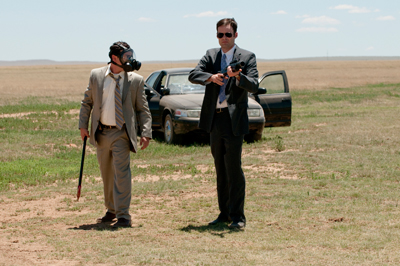 The actor offers his take on the first stages of production, noting that he didn't want Paul to have a stereotypical stiff personality of a stereotypical alien. He says, "In the motion capture, I thought it would be funny if Paul moved as much like me as possible. I tried to make it extra casual, like he was a little drunk and stoned all the time. I was amused by the fact that we were taking this insane technology and applying it to something so casual."
The actor offers his take on the first stages of production, noting that he didn't want Paul to have a stereotypical stiff personality of a stereotypical alien. He says, "In the motion capture, I thought it would be funny if Paul moved as much like me as possible. I tried to make it extra casual, like he was a little drunk and stoned all the time. I was amused by the fact that we were taking this insane technology and applying it to something so casual." To act in a bubble was initially a challenge for the comic performer. But he was up for it. "I like that you can keep working on the performance and keep refining it," he says. "I appreciate that it's different than live action. We looked at every scene in the movie and would say, for example, 'Paul needs to make a noise there.' We tried to make every little sound or action he has seem more genuine. It helps sell the illusion that much more."
The lion's share of Double Negative's efforts would be the team's translation of Paul to the screen-and putting this CG character in a real environment so that he would be completely convincing throughout the film. "It required lighting Paul in a very naturalistic way so he would be integrated with everyone else's performance," says Jody Johnson.
Sums Jody Johnson's colleague, visual effects producer Hal Couzens: "This is a film that can't look like a visual effects film. It has to look like a film with three guys in it and supporting cast and characters."
Not as easy as it sounds, since Paul utilised much handheld camera work, Steadicam and crane shots. The first stage required working closely with director of photography Lawrence Sher to get just the right shots. "We had a lighting puppet of Paul [created by Spectral Motion], and every scene we shot we put the lighting puppet in. Lawrence Sher set up the lighting to give Paul a framework and make him appear realistic among the other characters," says Jody Johnson. "Then I shot a reference of the lighting puppet that I took back to Double Negative so it could be used to base the CG lighting on."
In addition to his day job as Agent O'Reilly, Lo Truglio would be enlisted for another, no less important assignment on the film. He served as a performance stand-in for Paul when the alien was needed on set for reference purposes (and when the lighting puppet was no longer required). Many actors have stand-ins on a movie set; that's nothing new. But a CG character?
"What concerned us at the start," reflects Nira Park, "was that it's important in comedy to be able to react off someone. At first, we couldn't quite work out how to do it. We realised that it was essential to have a comic performer for Simon and Nick and the others to act with. When Joe's name came up, we thought, 'Why would he want to hang around to do that?' It's slightly schizophrenic going from playing O'Reilly to getting on your knees with kneepads and delivering Paul's lines. But Joe said yes and was just absolutely perfect for it."
Lo Truglio recounts his time on set as a little green man: "Paul was a tricky character because we needed to have the same empathy and compassion for a CGI character that we would have for a human. There were quite a number of people needed to make that happen. The first, of course was, Seth Rogan, who is Paul and had to wear the motion capture suit. Then afterwards there were the visual effects guys over at Double Negative. I was there for Seth Rogan's rehearsal and watched what he was doing. During production I tried to combine what Seth did to get a reaction from Simon Pegg and Nick Frost, so they weren't talking to someone who wasn't there. It was a challenge as an actor because the whole exercise was about creating this alien that is an amalgam of everyone's input. It was quite amazing. And I got a lot of mileage out of my kneepads, too."
While Lo Truglio served as Paul's performance stand-in, Christopher Zajac-Denek served as Paul's action double. When there was any complex choreography required, Greg Mottola and Lawrence Sher worked that out with the actors and secured all the camera moves, so it looked as if Paul was actually there. Then, both the puppet and Christopher Zajac-Denek were taken out of the scene and it was shot again with only the actors.
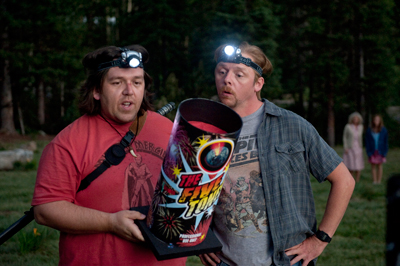 Briefly, there was a fourth Paul, a six-year-old named Tanner, who is the son of the movie's stunt coordinator. The young actor gladly stepped in for one scene in which Paul jumps on Agent Zoil. Says Hal Couzens: "We felt that if Jason Bateman just pretended to have somebody on him it wouldn't look realistic. So we dressed Tanner in a green suit and he fearlessly leapt on Jason Bateman and clung to him for dear life. Jason was wriggling around under him, and it was a brilliant interaction. Later, we replaced Tanner with the CG Paul."
Briefly, there was a fourth Paul, a six-year-old named Tanner, who is the son of the movie's stunt coordinator. The young actor gladly stepped in for one scene in which Paul jumps on Agent Zoil. Says Hal Couzens: "We felt that if Jason Bateman just pretended to have somebody on him it wouldn't look realistic. So we dressed Tanner in a green suit and he fearlessly leapt on Jason Bateman and clung to him for dear life. Jason was wriggling around under him, and it was a brilliant interaction. Later, we replaced Tanner with the CG Paul." Indeed, the only diva performer on the set of the film was the title character himself. Of the process, Greg Mottola laughs: "We'd shoot a rehearsal with Joe, shoot a rehearsal with someone carrying a little gray ball around for lighting reference, then we'd have to shoot stills of the set with no one in it. And then, often we'd do a version with the puppet, then without the puppet, hoping the puppet would work. But just in case it didn't, we didn't want to have to paint it out."
Once the lighting and performances were both addressed, the last reference was the entire physical environment in which Paul would exist. Explains Jody Johnson: "For that we used a Leica Total Station, which is a surveying device that enabled us to fire lots of lasers to generate a 3D model of what the camera was filming. Beyond that, we did environment lighting, using a technique called HDRI lighting-a 360-degree stitched plate that we shot with a stills camera with a very high dynamic range." The primary reason for this was that, as in any film, the lighting and surrounding weather conditions change with every shot. If the team didn't match it perfectly, Paul wouldn't seamlessly fit in to the world that Graeme and Clive inhabited.
The finished product amazed cast and crew alike. Sums Greg Mottola: "Where the team animates Paul rubbing his neck, they made his tendons snap and his thumb come around the side of his neck. It's amazing that what we respond to... it's what happens in our peripheral vision when we look at a character on screen that actually sells it. It's not what you're looking directly at."
No matter how good the special effects in Paul, the story's credibility requires that everyone involved believed in the possibility of aliens, starting with the film's co-creator and star Simon Pegg. "Yes, I think there are aliens out there," he says. "There have to be. There are billions upon billions of planets and stars. I just hope they're a little like Paul."
Behind the scenes with Simon Peg & Nick Frost Paul Part
www.girl.com.au/simon-peg-nick-frost-paul-continued.htm
MORE





